100 Days of Listening: Our Future Begins
Dear Mountain Lions Family,
It has been a true pleasure learning from and getting to know so many of you, as I began my One Hundred Days of Listening tour on Jan. 3, 2025. I was immediately moved by the love and passion that each of you brings to De Anza College.Your dedication to ensuring we remove all barriers with genuine care and commitment, so that our students can succeed, truly permeates each corner of our campus and shines brightly as a beacon of light and hope each day.
Read the Rest of President Torres' Message
Below, you'll find a list of nine themes that emerged from our conversations over the past 100 days, along with related key points and opportunities for the future.
But first, I want to thank each of you for the gift of your time. I had the privilege of engaging in over 100 sessions and hearing from over 750 students, faculty, staff, administrators, alumni and community supporters. During these sessions, participants were asked to share their thoughts on:
- Proudest moments during the last twelve months
- Biggest challenges or barriers in place right now
- Most promising opportunities for innovation and growth
- What is needed in order for promising opportunities to be realized
- Professional development requested and long-term career plans
Thank you to every student who shared your aspirations and ideas for the future of our college, to every faculty member who spoke passionately about your teaching and ideas for further engagement across campus, to every staff member and administrator who illuminated the inner workings that keep our college thriving through sometimes “invisible work” behind-the-scenes, and to our alumni and community partners who continue to invest in our shared future.
What struck me most throughout these dialogues was not just the intellectual vibrancy of our community – which is noteworthy – but the enthusiasm and ideas for an even brighter future that is grounded in preserving our equity imperative at De Anza College. From diversifying our portfolio of instructional offerings, to new ideas for student support that align with our ever-changing student demographics, to the incorporation of innovation and emerging technologies to best prepare our students for seamless and successful entry into the workforce, our collective vision for the future of De Anza College is shaped by the wisdom and aspirations of our entire community.
My listening tour also affirmed that our college is open to new opportunities and ready for a transition while upholding the fundamental tenets that comprise the foundation of De Anza. Community college students of the 21st century now face a quickly changing workforce that demands that we be cutting-edge, responsive and innovative to ensure that our students have access to the latest and greatest technologies to complement their academic travels through the halls of our great institution. Our students come to us from vastly different starting points with diverse academic goals. From adults looking to reskill or upskill, to marginalized and disproportionately impacted students seeking a collegiate path forward, to those desiring entry into higher education but who first require developmental support through low-stakes means such as continuing education before they transition into transfer-level coursework, we have the privilege of serving 100% of the students who apply to De Anza College.
As our community college system continues to address homelessness, food insecurity, mental health and other challenges that our students bring to our campuses, De Anza College is prepared to pivot, redesign and realign functions with these students in mind, to forge a path forward to opportunity. The future of the Silicon Valley depends on De Anza College’s call to action, as we modernize and automate our instructional and student support services, foster an entrepreneurial mindset that is both inclusive as well as embracing of industry changes, expand our educational and training partnerships, and mobilize the workforce to ensure effective responses to labor market needs.
Thank you for your unwavering pledge to our vision, mission and values and for your transformational leadership. Your boundless commitment, creativity and experiences make a difference in the lives of our students each day, and I was humbled by the glimpse that you gave me into your hearts during this process. As I close these first 100 days of listening, please know your voices were heard clearly, and I wholeheartedly convey tremendous optimism about what we will accomplish together. The talent, promise and purpose witnessed across our campus leave no doubt that our greatest contributions to knowledge, the college community and to one another lie ahead.
With deepest appreciation,
 Omar Torres, Ed.D.
Omar Torres, Ed.D.
President, De Anza College
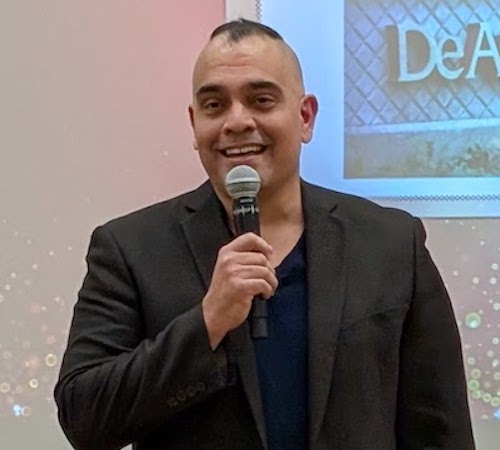
Nine Themes From 100 Days of Listening
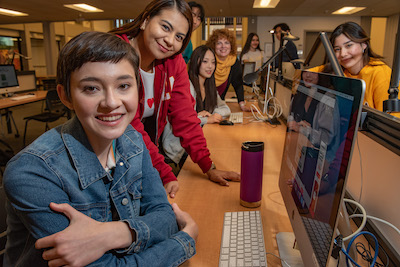
1: Digital Transformation With Human Connection
Key Points
- Expanding digital literacy across the curricula
- Creating digital learning spaces alongside traditional campus experiences
- Incorporating AI and emerging technologies while preserving faculty-student relationships
- Modernizing campus infrastructure to create technology-rich learning environments while honoring architectural heritage
Important Opportunities
- Investing in new artificial intelligence, augmented or virtual reality, and industrial automation technology as well as a cybersecurity lab in collaboration with industry partners
- Invoking digital systems that track student progress and auto-inform when students near completion of a degree or certificate
- Connecting with students throughout the quarter who might require intervention, using digital technology, while referring them to human mentors as needed for specific intrusion
- Connecting students with employers, internships, and apprenticeships using virtual and in-person career fairs
- Digitizing program maps for the various types of students we serve, and creating digital credential systems that clearly show progress toward career goals
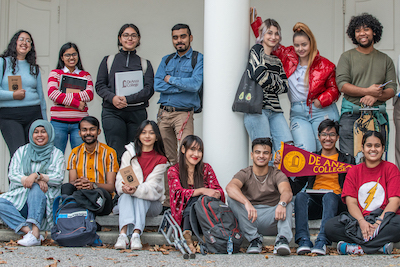
2: Inclusive Excellence and Access
Key Points
- Expanding educational opportunities across socioeconomic barriers
- Supporting diverse learning needs and culturally-responsive teaching
- Preserving college affordability while enhancing quality
- Celebrating cultural diversity while maintaining institutional identity
Important Opportunities
- Providing affordable student housing
- Hiring an equity faculty coordinator who works as a member of the Curriculum Committee to support fellow faculty members in the infusion of culturally-responsive and trauma-informed pedagogy into our course outlines of record
- Expanding access to free textbooks and resources through ZTC/OER that allow for students to fully complete a degree or certificate program
- Joining the community college collaborative at Elmwood Correctional Facility to expand access to courses that are offered to justice-impacted students
- Planning for various center spaces to be included across campus in the Services for Students building
- Participating in a Strategic Enrollment Management (SEM) Academy that allows our campus to develop its first SEM plan that aligns with our next Strategic Plan and intentionally identifies enrollment goals and activities aligned with district priorities, Vision 2030 and the Student Centered Funding Formula
- Developing new opportunities through dual enrollment while creating a college-going culture that extends from TK-12 into our college
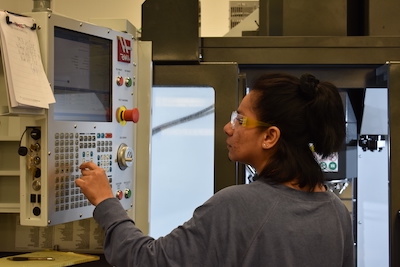
3: Workforce Development for Emerging Economies
Key Points
- Creating pathways to new career fields while sustaining traditional programs
- Developing partnerships with business and industry innovators
- Balancing technical skills with traditional liberal arts foundations
- Aligning responsive curriculum development alongside enduring academic disciplines
Important Opportunities
- Expanding access to paid internships for various disciplines across the college
- Creating new clinical site access for health care programs
- Formulating new bachelor’s degree options for high-demand career technical education programs
- Engaging in an IEPI PRT technical assistance team visit that educates our college on expanding access through continuing education (noncredit) and contract education (not-for-credit) to better meet the needs of business and industry while providing alternative pathways for working adult learners
- Creating stackable certificates that align with industry-certified credentials to accelerate entry into living-wage careers
- Establishing a Career Center on campus that provides students with access to resume building, interview preparation, paid work experiences, workshops, employer engagement and more
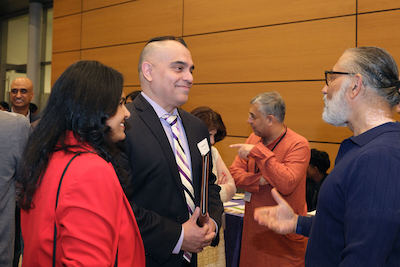
4: Community Engagement and Development
Key Points
- Serving as cultural and civic hubs while adapting to demographic shifts
- Preserving institutional history while embracing community evolution
- Supporting local economic development while maintaining educational focus
- Building new community partnerships while nurturing long-standing relationships
Important Opportunities
- Creating regular performance events through the VPAC that showcase successful entertainment and community events that bring the community to De Anza College
- Building future community coalitions with newer community organizations while leveraging established partnerships
- Providing workforce training to local businesses and industry partners, without having to wait on the development of new curriculum through existing state approval processes, that feature just-in-time and on-the-job training through contract education
- Inviting long-time community members and newcomers to share their perspectives on strategic goals and activities for De Anza College’s future as we engage in formulating our Strategic Plan 2027-2030
- Expanding cultural heritage celebrations and multigenerational programming that showcase the diverse backgrounds of the community’s changing demographics while bringing together students and community members for mutual learning, mentorship, while highlighting shared values (e.g., Patrons of the Arts, Scientific Academy)
- Formulating an Educational Alliance that brings together superintendents from our TK-12 districts to create a college-going culture while providing professional development for their teachers, internship opportunities for our students, and open dialogue among teachers and college professors in our collective efforts to better align curriculum
- Formulating a Business Alliance that brings together local employers and business leaders to identify necessary skills needed in the local workforce and inform the college of new curricular opportunities
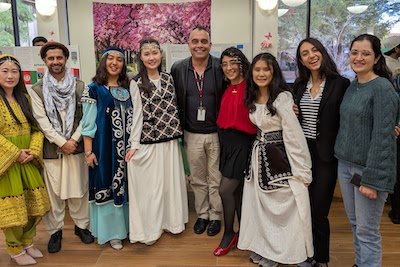
5: Global Citizenship With Local Roots
Key Points
- Expanding international perspectives while celebrating local heritage
- Preparing students for global workplaces while serving regional needs
- Building cross-cultural competencies alongside community connections
- Fostering global awareness while honoring institutional traditions
- Supporting international partnerships and exchange programs
- Addressing global challenges through local action
Important Opportunities
- Formulating open forums between local student clubs and community organization sponsors that establish a bridge to industry while showcasing perspectives on universal opportunities and local strengths into global markets
- Establishing a work source hub through a Career Center where local employers can strengthen local ties with the college and future student employees, and build cross-cultural skills
- Developing an Intercultural Teaching Academy that provides students an opportunity to learn skills that will enable them to lead effectively across cultures while addressing community needs
- Creating a Leadership Academy through joint district and college engagements for administrators, faculty and staff that provides participants with an opportunity to develop leadership skills to advance to higher levels of employment and create new opportunities in their existing jobs, while creating awareness in necessary competencies that will further support our community college system as well as local business and industry
- Creating archives that preserve institutional history while making it accessible to new global audiences using 21st century technology
- Developing a coordinated and interdisciplinary system that capitalizes upon existing international relationships and global education travel to enhance and create new opportunities for students, the college and the community in the future
- Positioning De Anza College, in concert with the district, as leaders in addressing climate change and resiliency through appropriate action and sustainability leadership as we plan for the next generation of building infrastructure, modernization and expansion
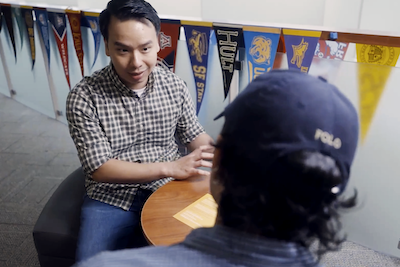
6: Student-Centered Holistic Support
Key Points
- Addressing mental health, housing and food security while maintaining academic rigor
- Creating comprehensive support systems alongside traditional academic advising that foster belonging
- Developing wellness initiatives that complement educational traditions
- Supporting the whole student while focusing on academic excellence, personalized academic pathways and advising
Important Opportunities
- Integrating stress management, available support services and wellness strategies into every course through syllabi communications and Villages communications for student awareness and engagement
- Completing the hire of the college’s new vice presidents in support of Finance, Instruction, and Student Services to ensure a forward-thinking, growth mindset approach that respects the traditions and successes of the college’s past while considers innovation and transformation of the 21st century
- Redesigning Open House, beginning April 2026, so that students can enroll in summer classes while receiving full student services support and registration assistance
- Integrating counseling services to bridge the gap between academic advising, consistent services delivery, preventing services fragmentation, and ensuring consistent professional development and cross-training for all counselors, while best serving students across general education and specialized programs
- Formulating a monthly Instructional Advisory Council and quarterly Part-Time Faculty Advisory Council, to better inform the vice president of Instruction as well as the president’s Senior Leadership Team, on opportunities to best holistically support students
- Creating a quarterly Student Advisory Council, where leaders from the DASG meet with the president and his Senior Leadership Team, to discuss feedback from students and opportunities to better serve students
- Devising new opportunities for student engagement through new bachelor’s degrees in career technical education and classes to justice-impacted (incarcerated) students
- Reinstating a Women’s Center on campus
- Developing an Early Alert digital system that regularly checks in with students upon registration and is not contingent solely on faculty input
- Training Village student leaders to promote peer support while connecting classmates to institutional resources
- Formulating administrative unit outcomes at the vice president level, as part of the annual program review process, that establish assessment of how student engagement and support services affect academic outcomes, engagement and well-being
- Formulating a campus safety plan and incident command structure designed to ensure an up-to-date response to various emergencies that may occur on campus
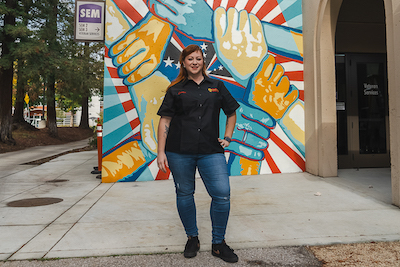
7: Flexible Learning Pathways
Key Points
- Offering multiple modalities while maintaining educational quality
- Creating stackable credentials alongside traditional degrees
- Supporting lifelong learning while preserving cohort experiences
- Personalizing education while maintaining community learning environments
- Engaging in the creation of new opportunities through credit for prior learning, competency-based education, apprenticeships, internships, noncredit and contract education
Important Opportunities
- Creating a year-long schedule for students that allows them to envision and register for their classes in advance
- Diversifying our portfolio of available options for students through short-term offerings (e.g., six-week courses) as well as multiple entry points into the college (e.g., classes that begin each month) based on a Guided Pathways model
- Updating program maps for all degrees and certificates offered that provide full-time and part-time student pathways
- Analyzing success rates for students taking classes via various modalities, in accordance with Title 5 Section 55210, in a format that is presented annually for reflection and subsequent action
- Enhancing project-based learning opportunities for students through expansion of internship, apprenticeship, on-the-job training, reskilling, and upskilling opportunities through both credit and noncredit programs while providing businesses an opportunity to receive immediate training through contract education
- Aligning certificate programs with industry-recognized credentials that can be offered through competency-based education, resulting in certification upon completion, and featuring a digital badge that students can showcase through their social media while attracting potential employers for future employment
- Expanding access to our college through credit for prior learning, adult reentry and transition from adult schools to noncredit and credit programming
- Investing in strategic innovation and development opportunities that will increase access to De Anza College, creating alternative revenue streams, and attracting new students to our campus community
- Investing in campus infrastructure changes that align with emerging technologies, creating new instructional spaces supported by access to artificial intelligence, virtual or augmented reality, simulation and automation, as well as new facilities and modernized laboratory spaces
- Developing a district and campus program viability process focused on program initiation, modification and revitalization to ensure adequate resources are deployed to sustain programming that aligns with labor market and workforce needs
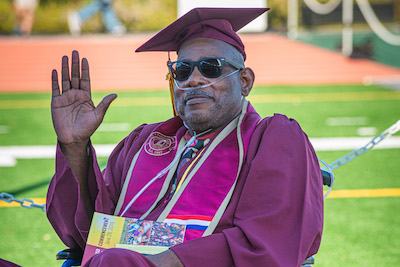
8: Lifelong Learning
Key Points
- Programs spanning from early college to senior education
- Continuous upskilling, reskilling and professional development
- Flexible reentry points for adult learners
- Honoring traditional educational values while embracing lifelong education models
- Creating local business and industry workforce training and professional skills enhancement
Important Opportunities
- Creating opportunities for our aging populations, partnering with senior centers to enhance their offerings while creating new on-campus opportunities for older adults, resulting in greater community engagement
- Enhancing opportunities for employees in the workforce to reskill and upskill through continuing education (noncredit) in areas of short-term vocational and workforce preparation training, recognizing that this population does not typically require traditional credit instruction
- Devising new opportunities for student engagement through dual enrollment that addresses populations across Fremont Unified, Palo Alto Unified, Mountain View Los Altos Union, as well as various charter and adult schools both in the region and outside of our traditional service area
- Expanding opportunities for students to seek employment in the six industry sectors identified by the Bay Area Community College Consortium: Advanced Manufacturing, Advanced Transportation, Health, Information Communication Technologies/Digital Media, Public Safety, and Education
- Providing immediate responsiveness to business and industry training needs through contract education while piloting new opportunities for curriculum development in credit and noncredit
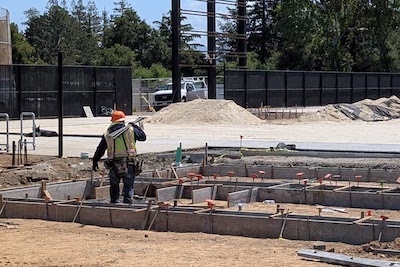
9: Financial Stability and Growth
Key Points
- Ensuring fair and equitable budget allocations across the district
- Stewarding bond dollars to optimize facilities to benefit students
- Pursuing alternative revenue sources
- Increasing fund balance to scale services for underrepresented students and support innovation across the college
Important Opportunities
- Investing in strategic innovation and development through the pursuit of grants and other external revenue sources to diversify funding that creates new opportunities for the college community
- Re-envisioning the college’s short- and long-term planning processes via formulation of a new Strategic Plan, Educational Plan, Facilities Plan, Technology Plan, Strategic Enrollment Management Plan and Student Equity Plan
- Developing a plan to become "basic aid" (or community supported) that addresses financial stability for the future
- Coordinating a fair and equitable district resource allocation model that properly accounts for the needs of De Anza College now and in the future
- Engaging with college and district leadership to create proper sinking accounts that can serve as backup reserves for emergencies and unexpected liabilities or expenses
- Creating an innovation fund to provide the campus community with initial financial support for a new, entrepreneurial project idea that advances student equity, student retention or increased enrollment while reinforcing student success, community engagement and growth mindset
- Investing in technology of the future by creating new funding opportunities and donations through work with the foundation, business and industry, grants, and other entities
- Coordinating with the district office to prioritize bond measure projects such as the Creative Arts building, creation of the beach volleyball courts and modernization of Athletics facilities, Services for Students building, and other upgrades such as restrooms, fire suppression systems, roofing and building exteriors
- Building targeted fundraising campaigns connecting donor interests with specific high-impact programs, especially those serving underrepresented students
- Creating an updated De Anza College economic impact report that demonstrates the impact to our community

